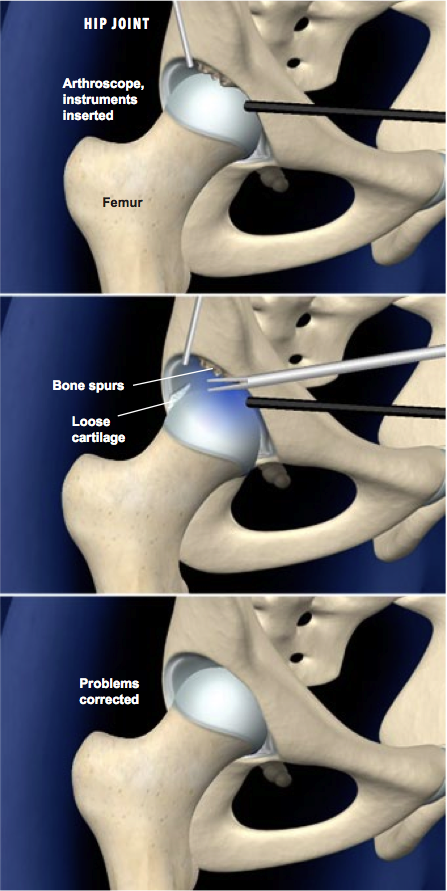Overview
This outpatient procedure allows the physician to examine the cartilage, bones, ligaments and tendons of the hip for damage or disorders. The physician uses a small camera, called an arthroscope, which is inserted into the hip joint.
The patient is positioned so that the front of the hip is clearly visible to the physician, and the area is cleaned and sterilized. Local anesthesia is administered to numb the injection site, and a sedative is provided to relax the patient. General anesthesia may sometimes be used.
Accessing the Hip
Two to five small incisions are made near the front and sides of the hip joint. An arthroscopic camera and other tools are inserted. The camera allows the surgeon to view the procedure on a monitor.
The Examination
The surgeon injects fluid into the space around the hip joint to expand the joint and provide a clear view. The surgeon carefully examines the joint to look for signs of damage.
Repairing the Joint
Once the hip has been examined, the physician may use one or more of the arthroscopic tools to repair any damage. Loose or damaged cartilage may be removed, and bone spurs may be shaved down. Severe damage to the hip may require further surgery.
End of Procedure
The incisions are closed with sutures or surgical staples. The hip is bandaged. The patient will be given pain relievers and should be able to leave the hospital within a day.

